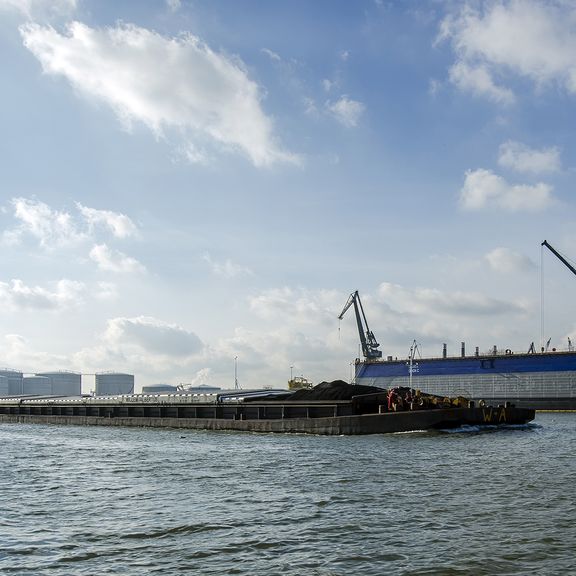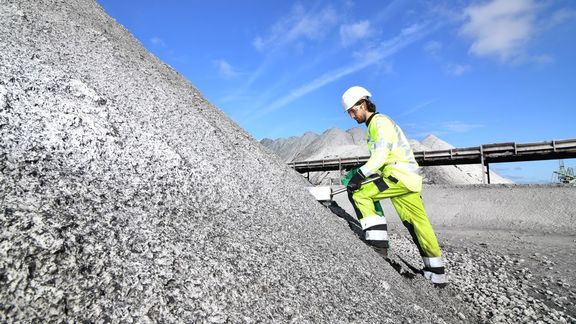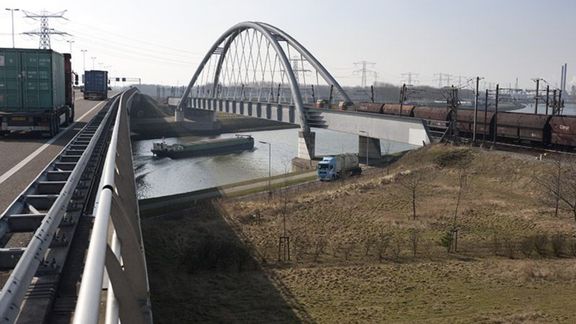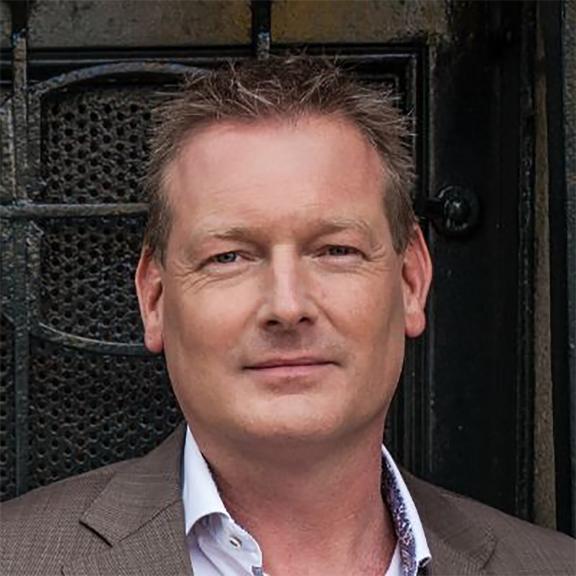
Coal
To halt climate change, we will need to substantially reduce the volume of CO2 released into the atmosphere. At present, one of the main contributors to our collective carbon emissions is the use of coal for electricity and steel production. A lot of this coal is imported via Rotterdam. While there is a strong cry to stop firing coal for these purposes, these large-scale industries cannot be transformed overnight.

“In the period 2015 - 2020, coal transhipment decreased by 44%. In 2021, gas prices rose and more coal was used to produce electricity. In 2022, the war in Ukraine caused gas prices to go up even more sharply. To limit CO2 emissions from Dutch coal-fired power plants, a 35% production limit had been imposed on them by the government. This limit was temporarily lifted during 2022, allowing Dutch power plants to return to full operation. In Germany, the demand for coal for power generation is also high due to the loss of Russian gas.
As a result, the initiated decline in coal transhipment (2015: 30.7 million tonnes; 2020: 17.3 million tonnes) has stalled and, on the contrary, there has been a big increase in coal again. In 2021, 24.6 million tonnes were transhipped, and 2022 also shows an increase. Of all coal entering Rotterdam, only some 10% remains in the Netherlands. The other 90% is shipped to Germany. About half of that 90% is consumed by the German steel industry, the other half by German power plants.”
Climate Agreement
Germany and the Netherlands are both signatories of the Paris Climate Agreement. The two countries have concrete plans – and in some cases have already introduced legislation – to phase out the use of coal for electricity production. In the Netherlands, power stations will no longer be allowed to fire coal as of 2030. The situation to the east is slightly more complex: the Germans have also decided to stop using nuclear power, and they will be phasing out the firing of lignite – which has a very poor environmental footprint – according to a fixed schedule. Partly in parallel with these measures, Germany has decided to decommission its coal-fired plants. This process, known as the Kohleausstieg, should be rounded off no later than 2038.
Steel industry
A decision is yet to be taken in both Germany and the Netherlands regarding the end of coal use for steel production. Production processes require temperatures in excess of 1,500 degrees Celsius, which most blast furnaces achieve by burning coal. Worldwide, one can find several blast furnaces that already use hydrogen instead of coal. But carbon-free hydrogen is only available on a very limited scale, and converting the sector to this energy carrier will cost time and sizeable investments. Steel is used for all sorts of purposes – everything from rail track to wind turbines – making it more or less indispensable to modern-day society.
Safe and efficient
As long as the burning of coal still complies with various national policies, Rotterdam intends to serve as the most efficient, safe and reliable port for importing this fuel. Moving coal via a port other than Rotterdam would not yield any concrete environmental benefits – but would affect local employment in Rotterdam. Furthermore, such a shift would actually result in greater environmental impact, as the supply lines would be less efficient.

In the Port of Rotterdam Authority’s outlook on the coming period, fossil flows like coal are increasingly superseded by renewable energy carriers and materials. The Port Authority has assumed a reduction in demand for coal in its prognoses. The pace at which this transition takes place depends to a large extent on developments in Germany. Factors include the stepped-up generation and import of renewable energy, new options to store this power and the speed at which industry can adopt innovations in hydrogen-powered steel production.
Legally difficult
Incidentally, in legal terms it would be very complicated – if not downright impossible – to bar coal from the port altogether. One of the cornerstones of the European Union is the free movement of goods. International trade agreements (World Trade Organization) mean that you cannot simply refuse certain types of goods: such a restriction can only be placed on specific goods that are subject to international treaties, like ivory or enriched uranium. While the signatories to the Paris Climate Accord have pledged to counter global warming, this agreement does not set out how they should go about this exactly.
Coal terminal for transhipment and storage
Several coal terminals in Rotterdam focus on the storage and transhipment of coal and related services.
EMO
EMO on the Maasvlakte is one of the largest coal terminal in Western-Europe with a throughput capacity of approx 200,000 tonnes of coal per day. EMO also has facilities for storage, screening, washing, crushing and mixing coal.
European Bulk Services (EBS)
EBS is a multipurpose dry bulk terminal operator with two terminals and floating cranes for ship-to-ship handling in Rotterdam. EBS also has storage facilities and a magnetic coal decontamination unit.
Marcor Stevedoring
Marcor uses floating cranes for the transhipment of various dry bulk cargo, including coal. In addition, Marcor provides floating storage facilities.
ZHD (Zeehavenbedrijf Dordrecht)
In Seaport Dordrecht, some 70 kilometres inland, ZHD focuses on the storage and transhipment of dry bulk cargo, containers and general cargo.
EECV
EECV is the property of the German steel producers ThyssenKrupp Stahl and Hüttenwerke Kruppe Mannesmann and is responsible for the storage and transhipment of iron ore and coal destined for the blast-furnaces of these two steel producers.
More information? Contact:
